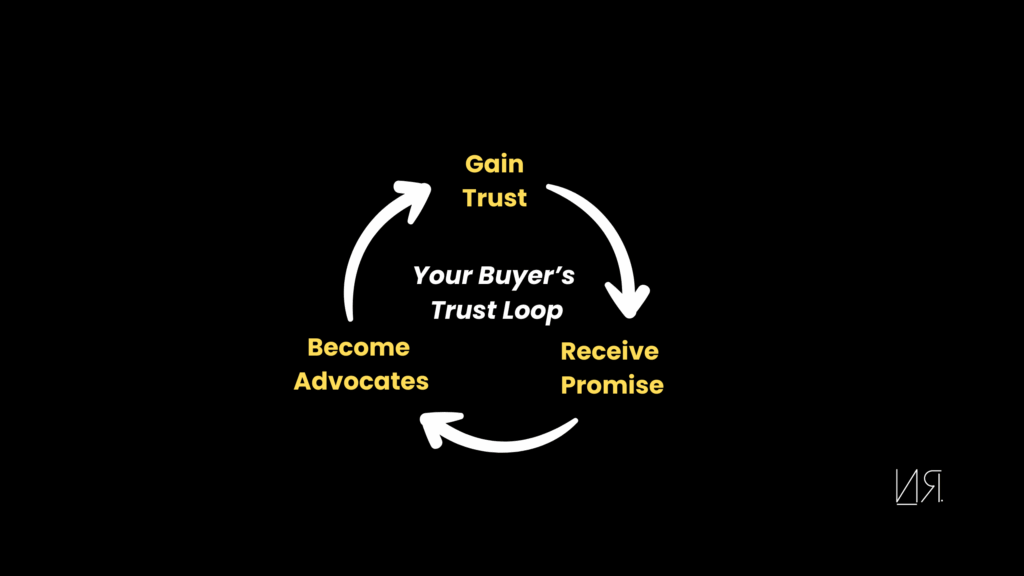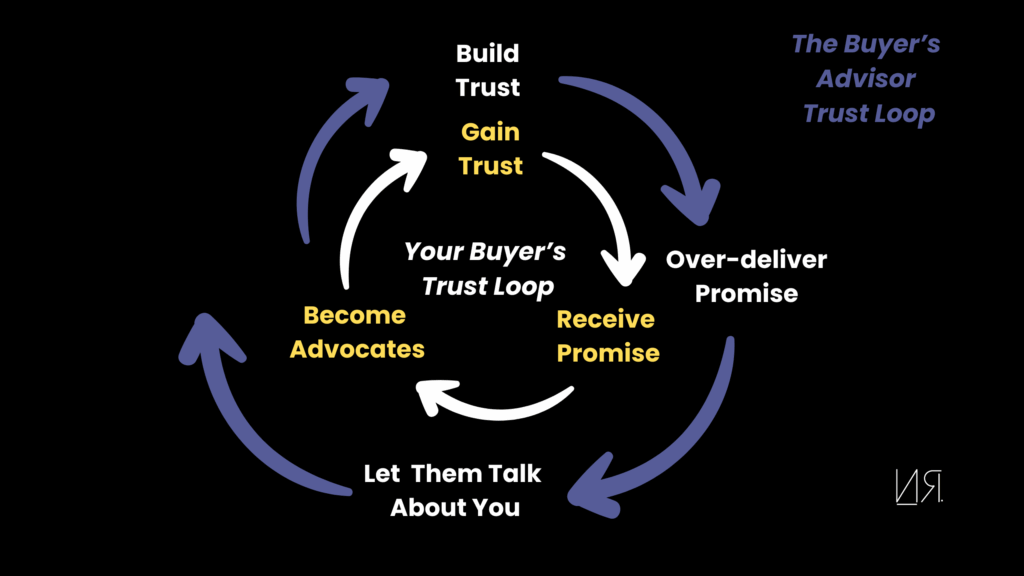This is a bonus of a 7-letter series about creating more opportunities in life and business.
The best entrepreneurs and sales people fill their pipeline with decisive leads.
In my first business, I’d wake up early in the morning, look at my calendar filled with sales calls I had worked hard to land.
I’ll give myself a pep talk in the mirror, take deep breaths to calm my nerves before the first one. In the back of my mind, a minute before the first call starts, I’d begin justifying if the prospect decided to be a no-show:
“That’s fine. I’ll get my 30 minutes back.” (Self-sabotaging thoughts are your enemy).
Ping!
The prospect has joined the call. We’d get over the pleasantries and my nerves would calm down. I’d remember that I’ve had enough practice reps. I’d go through the discovery process, share some advice, and talk about next steps.
Some converted. Most would ghost.
For the ones that ghosted, I used to think: “oh, they’ve probably just run off, executing on my strategy, or working with a competitor.”
With hundreds of these, I took each ghosting less personal.
I later learned that I was losing those opportunities to the biggest competitor that most businesses have: Indecision, fueled by your future client’s fear of making a mistake.
Your biggest competition is not another person or company offering similar services. It is inaction.
That’s where most deals die.
This shifted my entire perspective.
Self-interest might not be in your interest:
There’s a lot of market noise out there. With the rapid rate of advancement and content creation, it is hard to know what to pay attention to.
The people with good products get their messages diluted on the way to the people who could value from their solution. The people with the loudest voices drown out the media space with their dull messages.
And most people are thinking about themselves.
People need signals and guidance.
A tastemaker. Someone to guide them through the vast evolving space.
Your biggest point of leverage is to become a trusted advisor. This starts with curiosity, follows up with empathy, and ends up as a practice. To become a trust advisor, you have to continue to nurture trust for your customers.
You do this by immersing yourself completely in their shoes.
It’s amazing how most people don’t. They are so focused thinking about themselves. But if you actually developed empathy for the people you want to serve, things become a lot easier, putting you light-years ahead of any competition that’s still heads down, thinking about themselves.
Have the best interest of your customer at heart. Become trusted and your buyer’s advisor.
3 Steps to become your buyer’s trusted advisor:
Let me take you back a bit to that first business. After 100+ emails sent, 20 discovery calls, 14 proposals sent, I finally landed my first deal.
I did a little dance then I realized I had to get to work.
My first client was a US-based automotive company expanding into emerging markets. I helped them source and vet distribution partners. When the client came across from Germany to meet with these partners, we drove from partner to partner, spending a good amount of time in the typical Lagos traffic. While we stalled, between vehicles I asked my client: “You’ve done this a lot, traveling to different countries to build partnerships. What’s the one most important thing you do first?”
Without thinking about it, he responded: “it’s about finding a trusted business partner. All I need is one. A guide I can trust. Everything is easy after that.”
When you’re helping your buyers navigate a complex market landscape, you need to become a trusted partner. This might even involve sending your prospect to “your competition” if you think it’s in their best interest.
You become the go-to person to help them overcome your biggest competition “failure to make a decision” and if you have the right solution, at the right time, your sale just got a lot easier.
Here’s how to become your buyer’s advisor and trusted partner.
1. Understand the importance of this process.
Each person, including you, goes through three typical stages in the buying process:

- Gain Trust: The buyer only does transactions to solve their problems with people they trust.
- Receive promise: They expect to receive the promise that was made from getting into the transaction.
- Become Advocate: They tell their friends and colleagues about the promise, outcome, and transformation they received.
If you become a trust advisor, you will gain advocates.
Once you have advocates, talking about you and your solution, the job of building trust becomes a lot easier with each advocate you gain.
The ultimate goal is to optimize advocacy that reinforces trust and turning this into a virtuous cycle.
So look at the cycle and all you have to do is:

- Build trust
- Over-deliver on your promise
- Create a vehicle for your advocates to talk about you.
So let’s do that then.
2. Know where you are in the trust loop
I was chatting with a business advisor to a few start-ups and she said: “There’s one thing that makes successful startups, but every failed startup fails in its own unique way.”
It reminded me about success and failure in my business. When things are going well, I have so much clarity and momentum, but when things get shaky – deals falling through, lower email responses, I start panicking, trying multiple things, being in a thousand places.
I learned that when you need to be calm and build on clarity.
That’s why the trust loop I shared earlier is very helpful. You can always look at it and figure out where you are on the journey.
Let’s look at this from each step and start backwards.
When your advocates are not talking about you, it’s either you are not delivering on your promise or you are not providing a vehicle for them to advocate. If it’s the latter, you need a system to allow them to refer and review you.
I remember trying to get a video testimonial from one of my biggest clients at the time. His legal team got involved. They started sending documents about appropriate video content. It freaked him out. He ended up not doing it. I should have just asked for a written testimonial, he had offered to even write something on LinkedIn.
Moral of the story: Make it easy for people to advocate.
Now, if you have made it easy but people are not advocating, then you are not delivering on your promise.
Take a step backwards in the loop.
If you are not delivering on your promise, then you are probably taking on too much and not giving enough attention to your customers needs during delivery. In which case, you need to ask for feedback and understand what you need to improve.
However, if you are delivering on what you promised and they are still not advocating, then you have probably missed out on what they really need. You are missing product-market fit. You need to go back to the discovery state to understand their challenges, and create a solution they want, not a nice-to-have.
Take a step back.
If you are not having discovery calls, it means they do not trust you enough to think that spending their limited time with you is valuable to them.
It’s either they don’t know you or they know you but don’t think you are capable of solving the particular problem they have. If they don’t know you, ask for a warm intro from someone that knows them, otherwise create enough value in the form of educational content so they begin to know you. That’s why I shared all the steps to consistently package and share your expertise.
It all starts with trust and ends with trust.
You just have to investigate where you are in the trust loop and fix whatever is missing.
3. Jolt people out of indecision (with the right curiosity)
If you fail to ask the right questions you might waste too much time with prospects that lead nowhere.
There are two phases of effective discovery conversations:
- Agreeing on a vision
- Dealing with the fears of the customer to move forward
A high performing sales representative knows that they have to deal with these two phases in tandem. They do this in four steps called the JOLT method:
- Judging the indecision: Know that indecision can pop up in any section of the process. Gauge the prospect’s ability to be decisive early in the process to know whether to move forward or not. The best sales people fill their pipeline with decisive leads.
- Offer recommendation: Provide a recommendation on what will work best instead of asking endless questions from the customer who might not know what they want, increasing their uncertainty.
- Limit exploration: Know when to stop the customer’s request for further information. Do this by being seen as a subject matter expert on the topic.
- Take risk off the table: Manage expectations and provide creative solutions that guarantee the customer would not be left with a bad bag.
When you understand that there’s an underlying fear of making a mistake felt by your customer, your approach can be more thoughtful.
The resurgence of the advisor:
Human travel agents were losing jobs because of travel sites.
However, there has been a recent resurgence of them. There is just too much information to parse out a perfect plan for a custom trip. They are now travel advisors.
The same has happened with a lot of seller-buyer relationships.
There used to be what is called the principal-agent dilemma. There was friction and limits to trust because there was always some information asymmetry. The principal would always feel like the agent was acting in the agent’s best interest because the seller (agent) usually had more information than the buyer.
But the access to information has reduced this friction. However it has created something different – an overload.
You can overcome the agency dilemma by:
- Getting the customer to opt-in for a lower option
- Giving positive feedback on competitor’s solution
- Calling out the shortcoming of your solution
- Openly admitting that you don’t have all the answers
This helps build trust with the customers, acting as the buyer’s advisors.
Once the jolt playbook is implemented and you act as the buyer’s advisor, then the next step is to ask for the sale.
Ask for it like a simple nudge, make it the default next step. Up to the point, saying no will be doing work.
This is how good sales people should ask “if this all looks good, I’m ready to get your credit card information to book this and begin implementation.” Then over-deliver so your buyers become advocates.
Before you get there, become trustworthy.
Happy building.
Yours truly,
Nifemi


